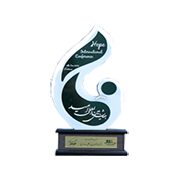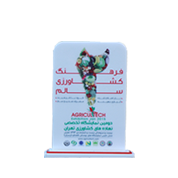
National selection of top producer of
poison and fertilizer
in Iran

Omid International Conference
International Conferences Center
In Tehran

Omid Second International Conference
International Conferences Center
In Iran

Omid Third International Conference
International Conferences Center
In Iran

Omid Fourth International Exhibition
International Conferences Center
In Tehran

11th International Agricultural Industry
Exhibition
Machinery and related services

Second Specialized Agricultural Exhibition
The permanent location of
the Bustan fairs

11th International Agricultural Fair
Premier Booth
In Iran

Sixth specialized exhibition
Tehran Agricultural Agencies
In Iran

National Award for Top
Manufacturing Unit
In Iran-gazvin

First place
Safir Cup Tournament
In Winter

Top Team
Ramezan Cup Tournament
TehraniMoghadam

Third place
Safir First Futsal Cup Tournament
itcup

The role and importance of the use of humic acid in sustainable agriculture

Today's population growth requires human beings to supply more food, and this has led to the development of surface and depth of land for further production. Application of deep development patterns has led to a widespread use of agricultural inputs, in particular the increased use of pesticides and various chemical fertilizers. In the pursuit of agricultural activities combined with the increasing use of chemical fertilizers for the production of more food, a large amount of waste is introduced into the environment, so that mismanagement will endanger many human and environmental problems. The excessive use of these long-term fertilizers The period has caused many problems, including the destruction of the population of beneficial microbes, environmental pollution, and the entry of nitrates into the human food cycle, and has seriously threatened the health of the human community. Therefore, a sustainable agricultural system to reduce environmental hazards, along with increased plant yields, has brought about the use of natural source inputs. The most important issues affecting the health of the environment and the sustainability of food production are the use of organic fertilizers instead of chemical fertilizers. As the population increases as demand for food and soil fertility decrease, the importance of using waste (as a fertilizer) for the maximum harvesting of the product, along with the reduction of erosion and soil regeneration, is more and more an economic factor It has been evident (Taqizadeh, Z et al., 2011)
Humic substances are considered to be organic materials. Organic materials are substances that, unlike chemical substances
Like toxins and chemical fertilizers are not made by mankind and naturally exist in the environment around us. Organic matter is a substance that has a high carbon content (C), and the more soil it is, the higher the percentage of organic matter or organic carbon content. Humic materials include Humic acids, Fulvic acids, Humate, Humin, and Humus.
Humic material plays a major role in the filtration, hydration and power as well as nutrition of any plant, including pistachio trees. High quality and fertile soils have a large amount of humic acids, humic acids, and follicle acids. Soil soils have a much higher yield than poor soils (soils with low organic matter).
The average organic matter content in the world's agricultural soils is between 4% and 6%, which is one of the most commonly used substances known as humic acid. Among the organic compounds, humic acid and fulvic acid, it can be used as one of the most important and alternative ingredients in the nutrition needs of plants, due to the peeling ability of various mineral elements such as potassium, magnesium, zinc, calcium, iron, copper and other nutrients. They do. These compounds are in fact a range of various mineral organic compounds, such as amino acids, peptides, phenols, aldehydes and nucleic acids, in conjunction with a variety of cations, which have made a very complex and wonderful combination and can last for millions of years in nature. Bring and do some great things that are not comparable to any other combination. The use of humic fertilizers in the production of crops is very important because of its high potential for ecological use and its high ability to regulate nitrogen and plant resistance to pests and to increase plant growth. The process of producing this material is that in the process of decomposition of plant tissues and under the influence of heat during a period usually less than one year, humus is produced. If the decomposition stages continue to be influenced by environmental factors, then a brownish color that is full of Carboxyl, phenol and benzoic groups are formed as humic acids, which have effective and useful compounds for plants during their growth and reproduction stages.